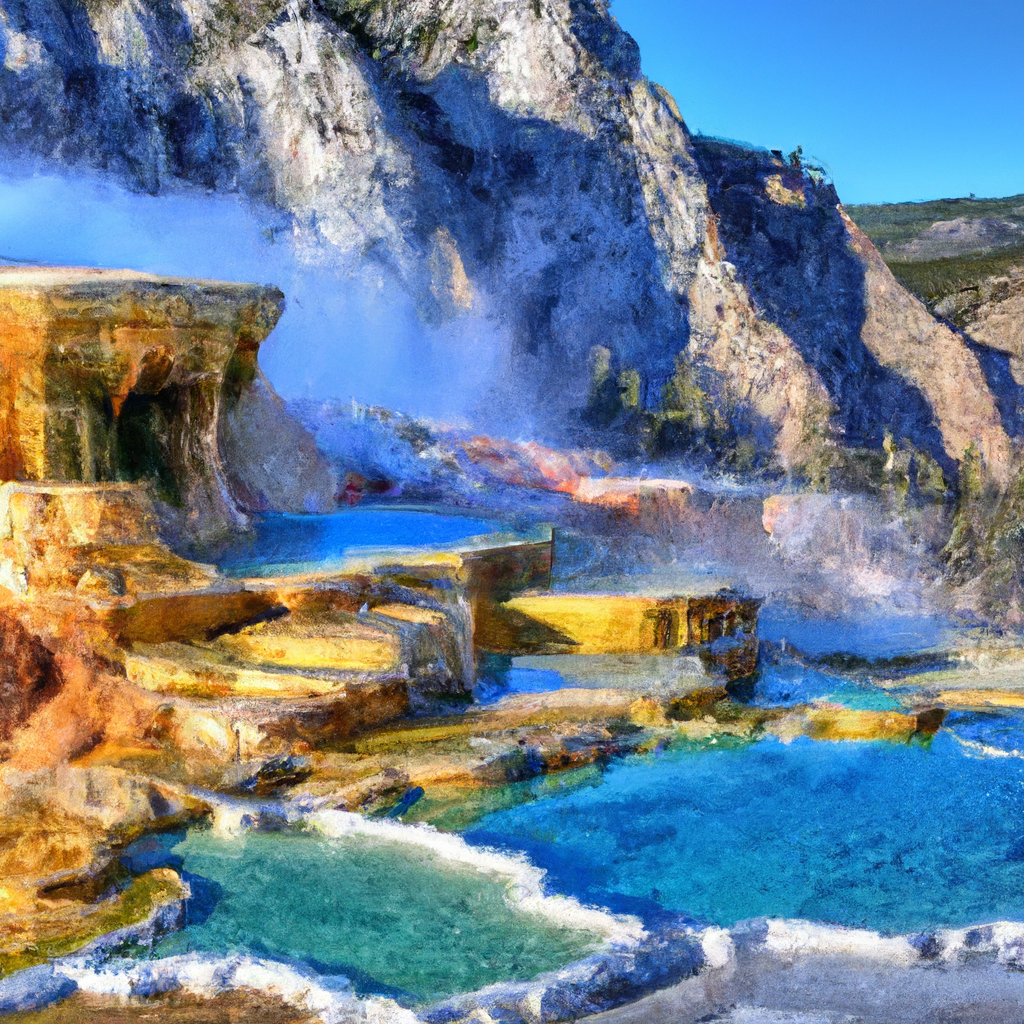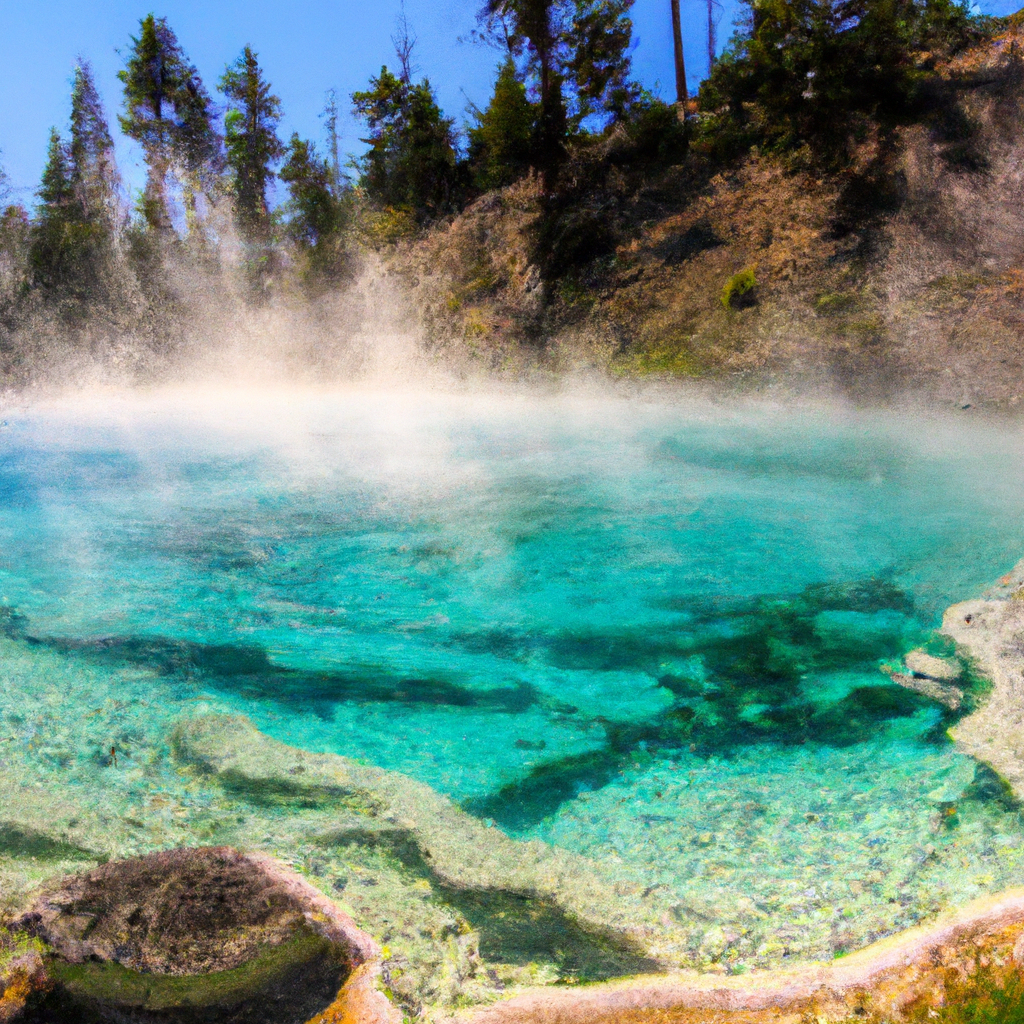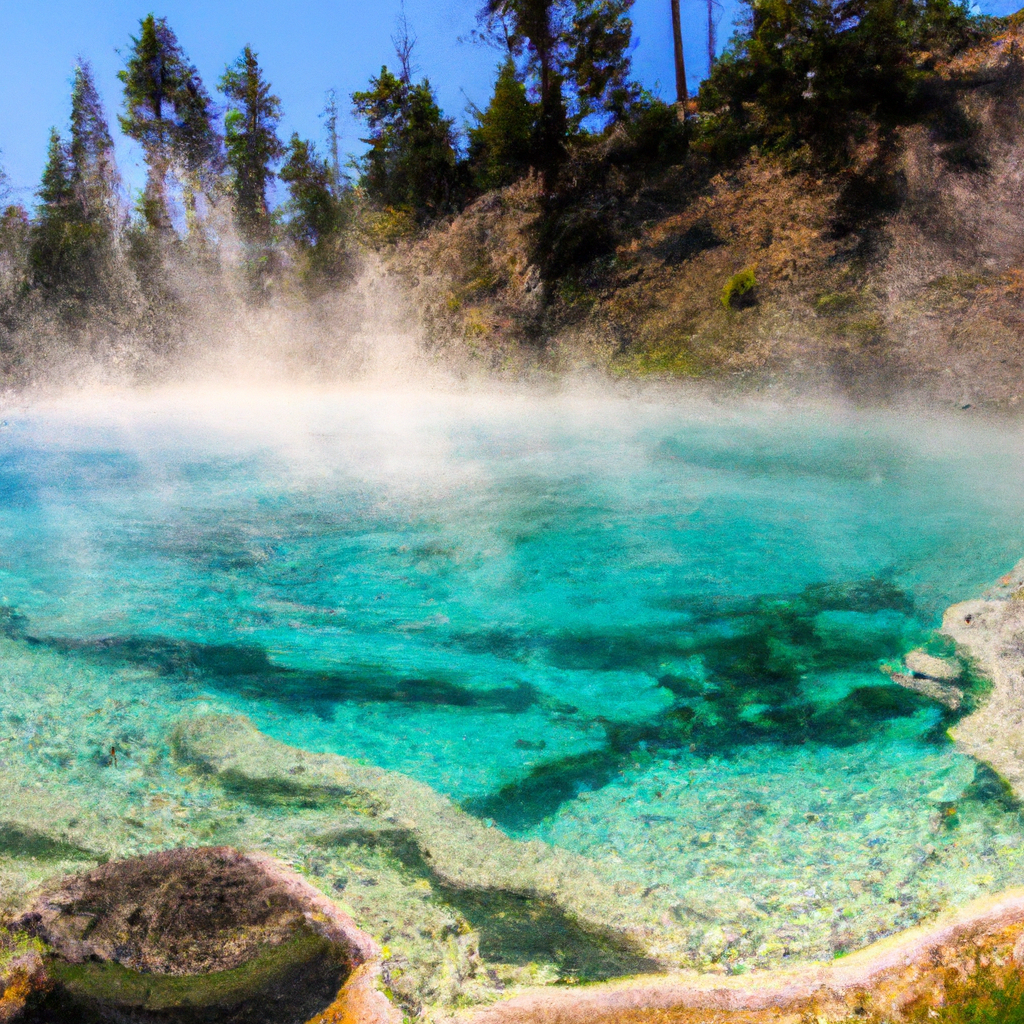Are you a fan of relaxation and rejuvenation? If so, then you̵7;re going to love this article! We’re going to explore the wonderful world of hot springs and how you can make the most of their incredible health benefits. From soothing muscle aches to improving blood circulation, hot springs have a lot to offer. So, grab your swimsuit and get ready to dive into the secrets of maximizing the therapeutic powers of these natural wonders. Get ready to elevate your wellness routine and discover a whole new level of bliss!
Understanding the Health Benefits of Hot Springs
Hot springs are natural bodies of water that are geothermally heated by the Earth’s interior. These unique natural wonders offer a host of health benefits that can enhance both your physical and mental well-being. Understanding the healing properties and impact that hot springs can have on your overall health is essential to make the most out of your visit.
Introduction to Hot Springs and Their Natural Properties
Hot springs are formed when water from rainfall seeps into the ground and is heated by the Earth’s geothermal energy. As this water travels through the surrounding rocks and minerals, it absorbs various beneficial minerals such as calcium, magnesium, and sulfur. These minerals give hot springs their unique composition, providing therapeutic effects when you soak in the hot water.
The Healing Properties of Hot Springs
Hot springs have been renowned for their healing properties for centuries. The combination of warm water and mineral content can provide relief for various conditions, including arthritis, muscle and joint pain, skin diseases, and respiratory issues. The heat from the hot springs relaxes muscles and stimulates blood circulation, promoting pain relief and aiding the body’s natural healing processes.
The Impact of Hot Springs on Physical and Mental Well-being
In addition to the physical benefits, hot springs also have a profound impact on mental well-being. Soaking in hot springs can help relieve stress and anxiety, allowing you to relax and unwind. The warmth of the water and the tranquil surroundings create a soothing environment, reducing tension and promoting a sense of calmness. The peacefulness of hot springs can also enhance mindfulness, providing an opportunity for self-reflection and rejuvenation.
Choosing the Right Hot Springs
When planning a hot springs visit, it’s important to choose the right one that suits your preferences and needs. Consider the following factors to ensure you have the best experience:
Researching Available Hot Springs
Start by researching the available hot springs in your desired location. Look for information on their mineral composition, water temperature, and any specific healing properties they are known for. This research will help you determine which hot springs align with your needs and preferences.
Considering Location and Accessibility
Take into account the location and accessibility of the hot springs. Choose one that is convenient for you to reach, considering factors such as distance, transportation options, and any necessary permits or fees. Opting for a hot spring that is easily accessible will enhance your overall experience and minimize any potential travel-related stress.
Checking Water Temperatures and Mineral Content
Hot springs can vary in temperature and mineral content, so it’s essential to check these factors before making a decision. Pay attention to the water temperatures and ensure they are within a comfortable range for your preferences. Additionally, consider the mineral content and its potential therapeutic effects on your specific health concerns.
Reading Reviews and Seeking Recommendations
Before finalizing your choice, read reviews and seek recommendations from others who have visited the hot springs you are considering. Learn about their experiences, the facilities provided, and any additional tips they may have. This information will give you valuable insights and help you make an informed decision about which hot springs to visit.

Preparing for a Hot Springs Visit
Preparing adequately for your hot springs visit will ensure a smooth and enjoyable experience. Keep these tips in mind before embarking on your hot springs adventure:
Consulting with a Healthcare Professional
If you have any pre-existing health conditions or concerns, it’s advisable to consult with a healthcare professional before visiting hot springs. They can provide guidance specific to your needs and ensure that hot springs are safe for you. This step is essential to prevent any potential complications or contraindications.
Understanding Any Contraindications or Precautions
Certain individuals may have contraindications or precautions that restrict their use of hot springs. For example, pregnant women, individuals with heart conditions, or those with open wounds or infections should consult with their healthcare provider to determine if hot springs are suitable for them. It’s crucial to understand and follow any contraindications or precautions to prioritize your safety.
Packing Appropriate Swimwear and Towels
When visiting hot springs, it’s essential to pack appropriate swimwear, towels, and other necessary items. Opt for swimwear that is comfortable and allows freedom of movement. Consider bringing extra towels to dry off after soaking and to sit on while relaxing by the hot springs. Additionally, pack a bag to hold your belongings and keep them safe during your visit.
Bringing Necessary Items Such as Sunscreen and Water
Ensure you have all the necessary items for your hot springs visit. Bring sunscreen to protect your skin from the sun’s harmful rays, even if the weather seems cloudy. Protecting yourself from sunburn is vital, especially when spending extended periods of time outdoors. Additionally, bring an ample water supply to stay hydrated during your visit. Drinking plenty of water is crucial to maintain hydration, especially when soaking in hot water.
Planning for the Duration of the Visit
Consider how long you plan to spend at the hot springs and plan accordingly. Some people prefer to spend a few hours soaking, while others may prefer a full day of relaxation. Determine the duration that suits you best, and plan your itinerary accordingly. Factor in rest breaks, meals, and any additional activities you may want to engage in during your visit.
Optimal Times and Durations for Soaking
To make the most of your hot springs experience, consider the following factors when deciding on the optimal time and duration for soaking:
Determining the Ideal Time of Day to Visit Hot Springs
The ideal time of day to visit hot springs may vary depending on personal preferences and external factors. Some people prefer to visit early in the morning or late in the evening when the hot springs are less crowded and the temperature is cooler. Others enjoy the vibrant atmosphere and opportunities for socializing during peak hours. Consider your preferences and schedule when determining the ideal time for your visit.
Considering the Season and Weather Conditions
The season and weather conditions can significantly impact your hot springs experience. While soaking in hot springs during the colder months can be particularly comforting, it’s essential to be mindful of extreme weather conditions. Avoid hot springs during severe storms, heavy rainfall, or extreme heatwaves as these conditions may pose safety risks. Be aware of any weather advisories or warnings, and plan your visit accordingly.
Understanding the Recommended Duration of Soaking
The recommended duration of soaking in hot springs varies depending on individual preferences and the specific hot springs you visit. While some individuals may find 20-30 minutes of soaking sufficient, others may prefer longer sessions. It’s important to listen to your body’s cues and find a duration that feels comfortable and enjoyable to you. Avoid excessive soaking, as prolonged exposure to hot water can lead to dehydration and fatigue.
Listening to Your Body’s Cues and Limitations
Your body is the best indicator of how long and how often you should soak. Pay attention to your body’s signals and adjust accordingly. If you start feeling lightheaded, fatigued, or overheated, it’s crucial to take a break and rest. Overexertion can lead to adverse effects, so it’s important to prioritize your well-being and listen to what your body needs.

Hydration and Nutrition
Hydration and proper nutrition play a vital role in maximizing the health benefits of hot springs. Follow these guidelines to ensure your body receives the necessary support:
Staying Hydrated Before, During, and After Soaking
Maintaining proper hydration is crucial when visiting hot springs. The combination of warm water, mineral content, and exposure to the elements can lead to increased perspiration and potential dehydration. Drink plenty of water before, during, and after soaking to replenish fluids lost.
Drinking Water with the Right Mineral Composition
Enhance the benefits of hot springs by drinking water with the right mineral composition. Look for natural mineral water or spring water with a balanced mineral profile. These types of water can provide additional trace minerals that support overall health and well-being.
Avoiding Alcohol and Other Dehydrating Substances
While soaking in hot springs, it’s important to avoid consuming alcohol or other dehydrating substances. Alcohol can further dehydrate the body and may increase the risk of accidents or injuries in hot water. Opt for non-alcoholic beverages or herbal tea to stay hydrated and enhance your hot springs experience.
Eating a Balanced Diet to Support Overall Health
Maintaining a balanced diet is essential to support your overall health and maximize the benefits of hot springs. Incorporate fruits, vegetables, lean proteins, and whole grains into your meals. These nutrient-dense foods provide essential vitamins and minerals that contribute to your well-being.
Sauna and Steam Room Usage
In addition to hot springs, many facilities offer saunas and steam rooms as part of their wellness offerings. These facilities provide unique benefits that complement your hot springs experience:
Understanding the Benefits of Saunas and Steam Rooms
Saunas and steam rooms offer a range of health benefits, including relaxation, detoxification, and improved respiratory health. The heat in saunas and steam rooms promotes sweating, which aids in the detoxification process and can improve skin health. The steam generated in steam rooms can help alleviate congestion and promote easier breathing.
Knowing the Recommended Duration and Frequency of Use
The recommended duration and frequency of sauna and steam room usage may vary depending on individual preferences and tolerance. Start with shorter sessions, gradually increasing the duration as your body adjusts. Typically, 10-20 minutes per session is a good starting point. Allow your body to recover between sessions, and avoid prolonged exposure to high temperatures to prevent dehydration or discomfort.
Alternating Between Hot Springs and Sauna/Steam Room Sessions
To optimize your wellness routine, consider alternating between hot springs and sauna or steam room sessions. Alternating between the heat and cold can have additional therapeutic effects on your body, promoting increased circulation and relaxation. However, listen to your body and adjust as needed, ensuring you do not overexert yourself.
Using Proper Etiquette and Hygiene in Shared Facilities
Respect the shared space and others using the sauna or steam room by practicing proper etiquette and hygiene. Always sit or lay on a towel to prevent direct contact with the seating surface. Remember to shower before entering these facilities to maintain cleanliness. Keep conversations low and be mindful of others’ desire for relaxation and tranquility.
Taking Care of Your Skin
While hot springs can provide numerous benefits for your skin, it’s important to take care of it to avoid any potential damage or irritation:
Protecting Your Skin from Excessive Exposure to Hot Water
Hot water can strip the skin of its natural oils and moisture. To protect your skin, limit your time in the hot water and avoid staying for prolonged periods. Find a balance between enjoying the hot springs and ensuring your skin remains healthy.
Using Natural and Gentle Skincare Products
When caring for your skin after soaking, opt for natural and gentle skincare products. Avoid harsh chemicals or fragrances that can irritate the skin further. Moisturizing creams or lotions with nourishing ingredients can help replenish moisture and restore the skin’s barrier function.
Moisturizing Your Skin After Soaking
After soaking in hot springs, be sure to moisturize your skin adequately. Applying a moisturizer immediately after drying off can help lock in hydration and prevent dryness. Choose a moisturizer that suits your skin type and preferences, ensuring it provides the necessary nourishment your skin needs.
Avoiding Prolonged Sun Exposure After a Hot Springs Visit
Extended exposure to the sun after a hot springs visit can increase your risk of sunburn and skin damage. To protect your skin, limit exposure to direct sunlight and seek shade when possible. Apply sunscreen with a high SPF to exposed areas and reapply regularly, especially if you plan to spend an extended period of time outdoors.
Stretching and Exercise
Hot springs provide a unique environment to incorporate gentle stretching and exercise into your wellness routine. Explore the following activities to promote flexibility and relaxation:
Performing Gentle Stretching Exercises Before and After Soaking
Prioritize gentle stretching exercises before and after soaking to warm up your muscles and maximize the benefits of hot springs. Engaging in gentle stretches can improve flexibility, enhance muscle recovery, and promote relaxation. Focus on stretching major muscle groups, such as the neck, shoulders, back, hips, and legs.
Taking Advantage of the Buoyancy and Warmth of Hot Springs
Hot springs offer buoyancy and warmth that can support different forms of exercise. Utilize the water’s buoyancy to perform low-impact exercises such as water walking, leg lifts, or arm movements. The warmth of the water can also help soothe and relax muscles during exercise, enhancing overall flexibility and joint mobility.
Nurturing Relaxation Through Yoga or Meditation in the Water
Take advantage of the therapeutic environment of hot springs and nurture relaxation through yoga or meditation in the water. Gentle yoga poses or meditation techniques can help release tension, improve focus, and deepen relaxation. Reconnect with yourself by practicing mindfulness and enjoying the peacefulness of the hot springs.
Exploring Water-Based Exercises to Improve Strength and Flexibility
Water-based exercises are excellent for improving strength and flexibility in a low-impact environment. Consider trying water aerobics, resistance training with water weights or resistance bands, or water yoga. These exercises can aid in muscle toning, cardiovascular fitness, and joint mobility while minimizing the risk of strain or injury.
Balancing Soaking and Rest
While hot springs offer numerous benefits, it’s important to strike a balance between soaking and rest. Consider the following tips to support your well-being:
Understanding the Importance of Rest and Recovery
Rest and recovery are vital components of any wellness routine. After enjoying the therapeutic effects of hot springs, it’s crucial to provide your body with adequate rest. Rest allows your body to repair and replenish, optimizing the benefits gained from soaking.
Listening to Your Body’s Signals for Rest
Every individual’s body has unique needs and limitations. Listen to your body’s signals and prioritize rest when needed. Fatigue, dizziness, or muscle soreness may indicate that your body requires a break. Take this time to relax, reflect, and recharge, so you can fully enjoy your next hot springs experience.
Creating a Personalized Soaking and Resting Routine
Creating a personalized soaking and resting routine will help you make the most of your hot springs visits. Consider your schedule, preferences, and goals when designing a routine that balances both activities. Allow flexibility in your routine to adapt to changes in your well-being and ensure it remains enjoyable and sustainable.
Avoiding Excessive or Prolonged Soaking
While soaking in hot springs can be incredibly enjoyable, it’s crucial to avoid excessive or prolonged soaking. Extended periods of time in hot water can lead to dehydration, overheating, or muscle fatigue. Set boundaries for yourself and ensure you take breaks to rest and rehydrate periodically.
Post-Hot Springs Care
After your hot springs visit, it’s important to take care of yourself and reflect on the experience. Follow these tips to ensure a smooth transition back to your regular daily activities:
Rinsing Off Any Residual Minerals or Chemicals
Minerals or chemicals in hot spring water can sometimes leave residue on your skin. To prevent any potential skin irritation, rinse off thoroughly after your hot springs visit. Use fresh water and a gentle soap or body wash to cleanse your body and remove any remaining substances.
Moisturizing Your Skin and Treating Any Specific Concerns
After rinsing, moisturize your skin to restore moisture and maintain its health. Choose a moisturizer that suits your skin type and concerns. If you have any specific skin concerns, such as dryness, redness, or inflammation, consider using targeted skincare products to address them.
Easing the Transition Between Hot Springs and Regular Daily Activities
Transitioning from a hot springs visit back to your regular daily activities requires a gentle approach. Take your time to adjust to the changes in temperature and activity level. Allow yourself moments of relaxation and self-care as you ease back into your daily routine.
Reflecting on the Experience and Its Impact on Your Well-being
Take the time to reflect on your hot springs experience and the impact it had on your well-being. Notice any changes in your physical or mental state and the overall effect it had on your stress levels and overall health. Appreciate the benefits you gained from soaking and use this reflection to plan future visits or incorporate similar wellness practices into your routine.
By understanding the health benefits of hot springs, choosing the right one, preparing adequately, finding the optimal soaking times and durations, staying hydrated and nourished, utilizing sauna and steam rooms, caring for your skin, engaging in exercise, balancing soaking and rest, and practicing post-hot springs care, you can maximize the health benefits of hot springs. Embark on your hot springs journey with confidence and make the most out of these incredible natural wonders for your physical and mental well-being.
